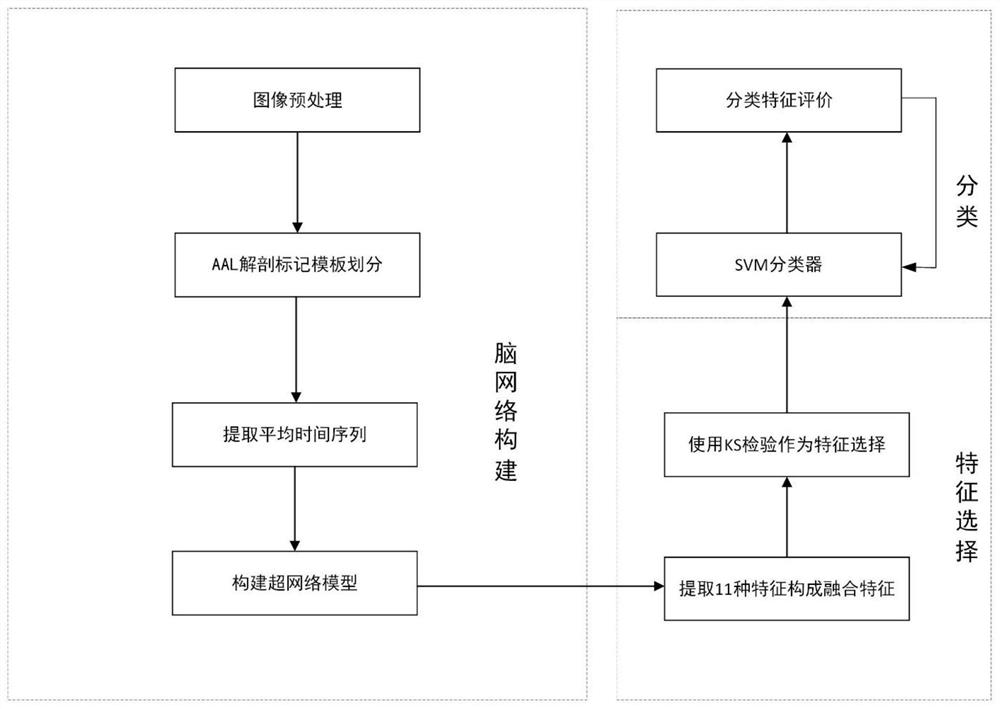Multi-feature fusion data classification method based on brain function super network model
A multi-feature fusion and data classification technology, applied in the field of image processing, can solve problems such as low classification accuracy and one-sided information
- Summary
- Abstract
- Description
- Claims
- Application Information
AI Technical Summary
Problems solved by technology
Method used
Image
Examples
Embodiment Construction
[0066] The technical solutions in the embodiments of the present invention will be clearly and completely described below in conjunction with the embodiments of the present invention. Apparently, the described embodiments are only some, not all, embodiments of the present invention. Based on the embodiments of the present invention, all other embodiments obtained by persons of ordinary skill in the art without making creative efforts belong to the protection scope of the present invention.
[0067] The fMRI image data classification method based on super-network fusion features is specifically carried out in accordance with the following steps:
[0068] Step S1: Preprocessing the resting-state fMRI image data, and then segmenting the image into regions according to the selected standardized brain atlas, and extracting the average time series of each segmented brain region;
[0069] Step S2: In this study, composite MCP is used as a penalty term to solve the sparse linear regre...
PUM
 Login to View More
Login to View More Abstract
Description
Claims
Application Information
 Login to View More
Login to View More - Generate Ideas
- Intellectual Property
- Life Sciences
- Materials
- Tech Scout
- Unparalleled Data Quality
- Higher Quality Content
- 60% Fewer Hallucinations
Browse by: Latest US Patents, China's latest patents, Technical Efficacy Thesaurus, Application Domain, Technology Topic, Popular Technical Reports.
© 2025 PatSnap. All rights reserved.Legal|Privacy policy|Modern Slavery Act Transparency Statement|Sitemap|About US| Contact US: help@patsnap.com



